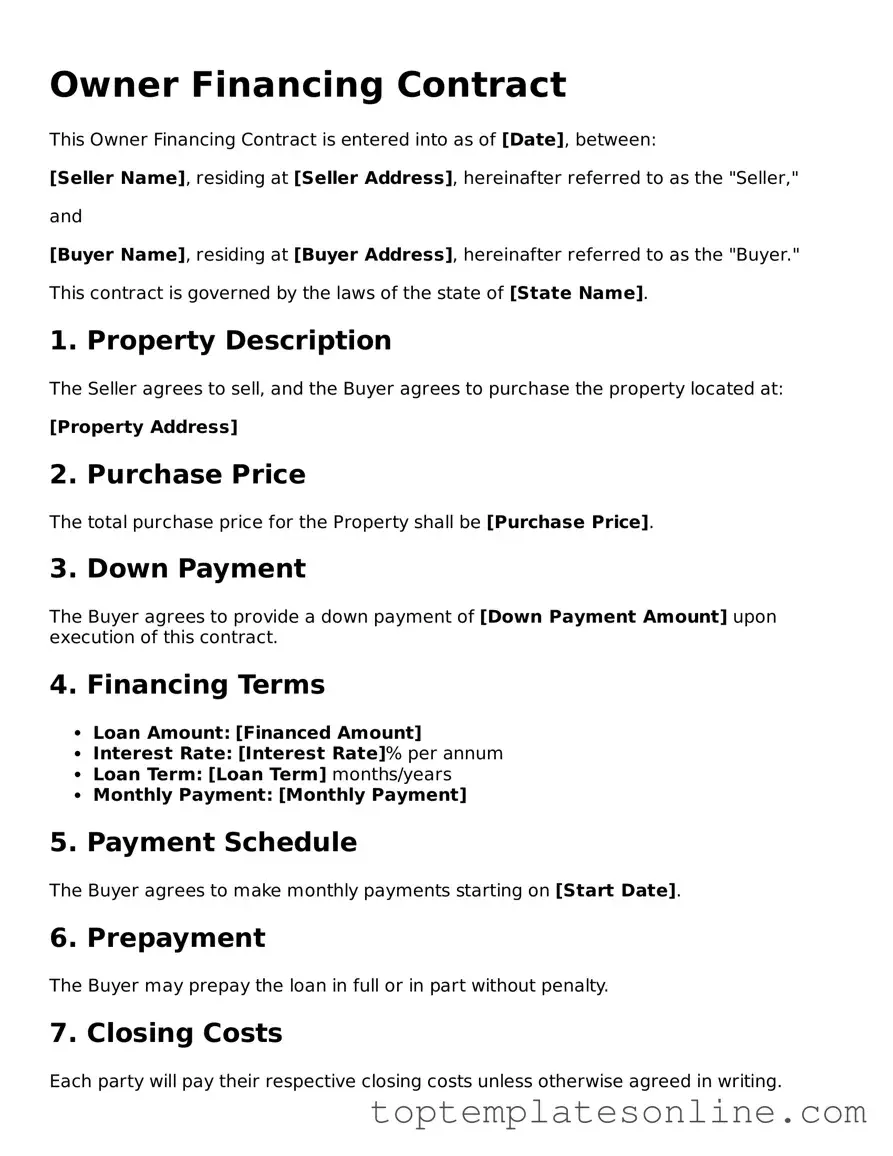Attorney-Approved Owner Financing Contract Form
The Owner Financing Contract is a legal agreement that allows a property seller to finance the purchase for the buyer, bypassing traditional mortgage lenders. This arrangement can provide flexibility for both parties, often making it easier for buyers to acquire property while allowing sellers to receive steady income. Understanding the key components of this contract is essential for anyone considering this financing option.
Customize Owner Financing Contract Here
